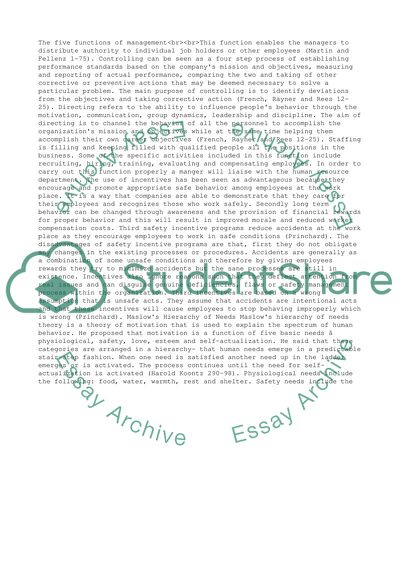Cite this document
(“The five functions of management Essay Example | Topics and Well Written Essays - 1000 words”, n.d.)
The five functions of management Essay Example | Topics and Well Written Essays - 1000 words. Retrieved from https://studentshare.org/management/1438259-the-five-functions-of-management
The five functions of management Essay Example | Topics and Well Written Essays - 1000 words. Retrieved from https://studentshare.org/management/1438259-the-five-functions-of-management
(The Five Functions of Management Essay Example | Topics and Well Written Essays - 1000 Words)
The Five Functions of Management Essay Example | Topics and Well Written Essays - 1000 Words. https://studentshare.org/management/1438259-the-five-functions-of-management.
The Five Functions of Management Essay Example | Topics and Well Written Essays - 1000 Words. https://studentshare.org/management/1438259-the-five-functions-of-management.
“The Five Functions of Management Essay Example | Topics and Well Written Essays - 1000 Words”, n.d. https://studentshare.org/management/1438259-the-five-functions-of-management.


